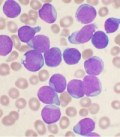 The first 2009 issue of SpectroscopyNOW is now available:
The first 2009 issue of SpectroscopyNOW is now available:
Tweezing out leukemia spectra – US researchers have used laser tweezers Raman spectroscopy (LTRS) to help them characterize the effects of different chemical fixation procedures on the spectra of healthy cells and leukemia cells and to avoid the misinterpretation of data.
Crime and punishment – A truly interdisciplinary collaboration between biology, law and neuroscience at Vanderbilt University has used functional magnetic resonance imaging, fMRI, to watch how the brain changes when a person thinks about crime and punishment.
Folding issues – NMR spectroscopy is helping US chemists work out shorter and simpler routes to protein-based drugs for treating a wide range of illnesses including diabetes, cancer, and hepatitis.
By Jove, it’s hot and steamy – In 2007, astronomers discovered that a scorching-hot gas planet beyond 63 light years from our solar system is steaming with water vapour, now, it seems the planet, a hot Jupiters, also suffers from high carbon dioxide levels in its atmosphere.
Opal reversal – Electrochemically oxidizing and reducing an inverse polymer-gel opal causes it to swell and shrink, which alters the wavelength of the light it diffracts brightly, from ultraviolet through the visible to the near infrared, the material could pave the way to new display and monitor technologies.
X-rayed dinobird – Researchers at the SLAC National Accelerator Laboratory used the Stanford Synchrotron Radiation Lightsource (SSRL) to shine intense X-ray beams on the so-called “dinobird” to reveal chemical secrets that have been hidden from view for millions of years.